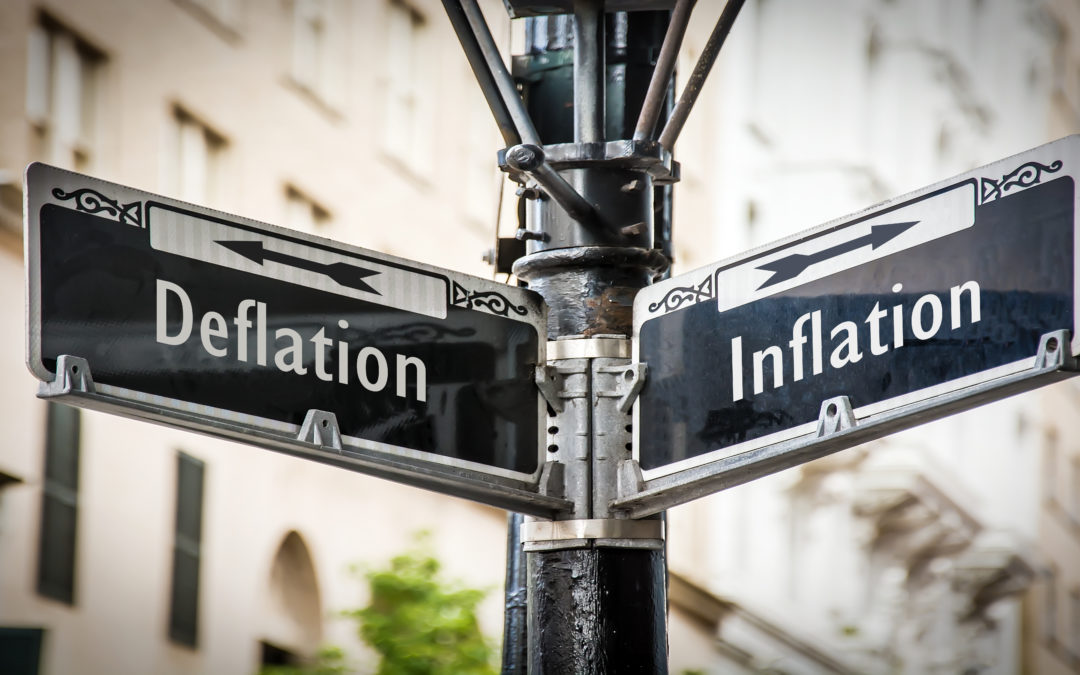While elevated inflation levels are typically a sign of a healthy economy, they could also signal a need for investors to reassess their portfolios. The relationship between inflation and investment returns varies by asset class, and bonds will generally lose value or be indexed for inflation risk.
Stocks could rise or fall in price, depending on how inflation affects company performance. Increased consumer demand could yield higher prices that might mean more profits for some companies. However, a corresponding rise in labor and raw materials cost might inevitably taper earnings expectations and could even prove disastrous for some companies.
On the other hand, precious metals like gold and silver can survive inflation because they don’t derive value in the same manner as paper money. Likewise, investing in commodity producers in the food, energy, and mining sectors could generate positive returns as prices rise. Real estate and foreign stocks might present investors with opportunities for making money during inflation as well.
Knowing how to protect assets from inflation often boils down to knowing which assets to avoid. With that in mind, we believe that investors should proceed with caution before adding the following to their portfolios:
- Stocks With High P/E Ratios and No Pricing Power
As its name suggests, the price-to-earnings ratio measures a company’s share price against its earnings per share. Although it’s not always a reliable indicator for gauging a stock’s potential, a high P/E ratio can be hard to maintain during inflationary periods. Shares of companies that cannot achieve consistent growth could experience a selloff, and the downside risk is generally greater for stocks with higher ratios. For companies that cannot pass on higher costs to their customers by raising prices, profit margins get pressured, and the chances that their share price is rerated with a lower P/E ratio are high.
- Bonds With Low Yields
Fixed-rate securities like treasury bonds, investment-grade corporate bonds, mortgage-backed securities, and municipal bonds enable investors to generate consistent income from their investments. However, with interest rates near historic lows, bond yields have been negligible on a nominal basis and negative on an inflation-adjusted basis. For that reason, we would advocate choosing other kinds of investments over bonds. Will that change if rates go up? Possibly. But a rise in interest rates will be accompanied by a decline in bond prices. That’s why we think it’s generally best to steer clear of these assets during high periods of inflation.
Inflationary periods can present both challenges and opportunities for investors. Work with your financial advisor to ensure you understand the difference between the two and position yourself accordingly.
If you need help building a portfolio that can weather the storm of inflation, check out our post on value investing. Or get in touch with us at Pekin Hardy Strauss Wealth Management for a free financial assessment.
This article is prepared by Pekin Hardy Strauss, Inc. (“Pekin Hardy,” dba Pekin Hardy Strauss Wealth Management) for informational purposes only. The information and data in this article do not constitute legal, tax, accounting, investment, or other professional advice. The views expressed are those of the author(s) as of the date of publication of this report and are subject to change at any time due to changes in market or economic conditions. There is no guarantee that the types of investments discussed herein will outperform any other investments in the future. Although information has been obtained from and is based upon sources Pekin Hardy believes to be reliable, we do not guarantee its accuracy. There are no assurances that any predicted results will actually occur. Past performance is no guarantee of future results.

